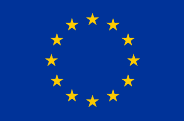
Safe non-food consumer Products in the EU and China
Electronic cigarettes, also referred to as ‘vapes’ or ENDS (Electronic Nicotine Delivery Systems) are defined specifically as a product which can be used for the consumption of nicotine containing vapour via a mouthpiece, or any component of that product, including a cartridge, a tank and the device without a cartridge or tank. Such devices may either be single use and disposable or refillable by means of a refill container and a tank, be rechargeable with single use cartridges.
The most common risks identified in this product sector are set out below.
1. Electrical risks
2. Thermal risks:
This is a list of examples of common risks. However, the manufacturer has to carry out an assessment of the e-cigarette that covers all relevant risks that may be associated with the product and actions taken to mitigate these risks where possible. A general definition of risk and its relationship to hazards can be found in the factsheet on Risk management.
Specific examples of measures taken against dangerous e-cigarettes offered for sale in the European Union are available on the Safety Gate website. Type ‘e-cigarette’ into the free text search box (but without the quotation marks) and select the ‘electrical appliances and equipment’ Product Category to view notified examples. A better understanding of mistakes made in the safety assessment on the e-cigarettes or its manufacture can help avoid their repetition.
Particular risks in relation to the nicotine hazard and other associated chemical hazards are addressed in the Tobacco Products Directive which specifies the process of ensuring that e-liquids themselves are safe for inhalation, limits nicotine concentration levels and container sizes to reduce the risk associated with accidental ingestion or other contact by children.
Please note that every product must be safe for consumers, according to the General Product Safety Directive (GPSD) of the EU. This applies to e-cigarettes.
Under the Directive, a product is safe if it meets all legal safety requirements under European or national law.
A ‘safe product’ shall mean –
any product which, under normal or reasonably foreseeable conditions of use, does not present any risk or only the minimum risks compatible with the product’s use, considered to be acceptable and consistent with a high level of protection for the safety and health of persons.
It is important to take into account the following points in particular:
Please also check the Fact sheet for “Power Supplies, Chargers and Adaptors” for safety requirements for the external power supply (link).
“European standards” exist in the EU for these products, that have been published in the Official Journal of the European Union (OJEU). A product complying with these standards is presumed to meet the EU safety requirements.
[Note: A European standard published in the official Journal of the European Union is called “harmonised standard” when it is adopted on the basis of Union harmonisation legislation. When a EN standard is published in the OJEU under the GPSD, that is a general Directive (non-harmonisation legislation), it cannot be called harmonised standard. In general, EN standards published in the OJEU give the legal effect of presumption of conformity to the products complying with these.]
The following standards are relevant to e-cigarettes:
CEN/TR 17236:2020
Electronic cigarettes and e-liquids – Constituents to be measured in the aerosol of vaping products. This standard describes the methodology for determination of potentially hazardous chemicals in the vape aerosol.
EN 13127:2012
Packaging. Child resistant packaging. Mechanical test methods for recloseable child resistant packaging systems. This standard describes a mechanical method for confirming child resistance.
CEN/TS 17287: 2019
Requirements and test methods for electronic cigarette devices. This standard specifies the minimum safety requirements for electronic cigarette devices, e-liquid containers and associated accessories when used in the manner specified by the manufacturer.
EN 62311:2008
The standard describes measurement methods and safety requirements related to human exposure restrictions for electromagnetic fields (0 Hz – 300 GHz).
However, the standard series covers other safety issues and manufacturers are strongly advised to consult the whole standard.
The following summarises some further key applicable laws:
All product information must be given in the official language(s) of the country in which the wheeled child conveyance is sold. There are also specific labelling requirements for electronic cigarettes, which must be in language specified in the Member States where they are placed on the European market. These include (*asterisked requirements may be on an accompanying leaflet):
The crossed-out wheel bin is obligatory for all electronics to indicate that it must be disposed of according to the rules for handling of waste from electronic and electrical equipment.

To ensure that manufacturers produce only safe e-cigarettes, there are also a range of general requirements to be fulfilled. These are explained in the following factsheets and need to be read in conjunction with this factsheet:
You may also visit the SPEAC ACADEMY to learn more about the EU Safety requirements.
The provided information was updated in 2022. Please note that some of the provided information could change during possible subsequent revisions of legislation, standards, and guidance documents. For any updates of official information on the EU product safety rules, please follow the Link to the webpage of the European Commission.
This document was produced with the financial support of the European Union. Its contents are the sole responsibility of SPEAC project and do not necessarily reflect the views of the European Union.

This website was created and maintained with the financial support of the European Union. Its contents are the sole responsibility of SPEAC project and do not necessarily reflect the views of the European Union.